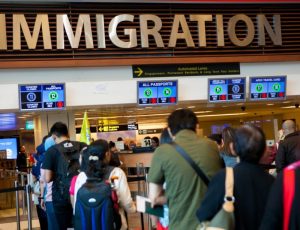Australia’s immigration landscape has been undergoing significant changes recently, driven by the need to adapt to evolving economic and social conditions. The recent policy changes have had notable impacts, particularly in the realm of skilled migration and labor needs. The government of Australia has been focusing on refining its immigration policies to better align with the country’s economic objectives and labor market demands. These reforms aim to attract highly skilled individuals who can contribute to the nation’s growth and address existing labor shortages in critical industries.
The focus on skilled migration is a cornerstone of the current immigration reform efforts. By prioritizing skilled workers, Australia aims to enhance its competitive edge in the global market. This approach not only addresses immediate labor shortages but also ensures a steady influx of talent that can drive innovation and economic development. The emphasis on skilled migration reflects a strategic shift towards building a workforce that is capable of meeting the challenges of a rapidly changing global economy.
Reasons for Reform

One of the primary reasons for the recent immigration reforms is to enhance economic growth through skilled labor. By attracting highly skilled individuals, Australia can tap into a pool of talent that can drive productivity and innovation. Skilled workers bring with them a wealth of knowledge and expertise, which can significantly contribute to the country’s economic development. This influx of talent is expected to create a ripple effect, leading to increased investment, job creation, and overall economic prosperity.
Another critical reason for the reforms is to address labor shortages in critical industries. Sectors such as healthcare, information technology, and engineering are experiencing significant gaps in their workforce. By streamlining immigration processes and creating more accessible pathways for skilled workers, Australia aims to fill these gaps and ensure that essential services and industries continue to function efficiently. Addressing labor shortages in these key areas is crucial for maintaining the country’s economic stability and growth.
Stakeholder Perspectives
The impact of the immigration reforms on local businesses has been a topic of considerable discussion. Many businesses have welcomed the changes, as they provide a more straightforward and efficient process for hiring skilled workers. This has allowed businesses to address their labor needs more effectively and maintain their competitive edge. The reforms have also reduced the administrative burden on employers, making it easier for them to navigate the immigration system and focus on their core operations.
The benefits for the skilled labor market are also significant. The reforms have created more opportunities for skilled individuals to migrate to Australia and contribute to its economy. Enhanced pathways and streamlined processes have made it easier for skilled workers to obtain visas and settle in the country. This has not only expanded the talent pool but also provided skilled workers with greater job security and career prospects. The overall effect has been a more dynamic and responsive labor market that can better meet the needs of both employers and employees.
Proposed Changes and Their Implications
One of the key proposed changes under the immigration reforms is the streamlined visa processing. By simplifying and expediting the visa application process, the government aims to make it more efficient and user-friendly. This change is expected to reduce waiting times and administrative hurdles, making it easier for skilled workers to obtain the necessary documentation and start contributing to the economy. Streamlined visa processing is a crucial step towards creating a more attractive and accessible immigration system.
Another significant proposed change is the enhancement of skilled worker pathways. The reforms aim to create more defined and accessible routes for skilled workers to migrate to Australia. This includes expanding the range of eligible occupations, improving recognition of foreign qualifications, and providing more support for skilled migrants. These changes are designed to attract a diverse range of talent and ensure that skilled workers can integrate smoothly into the Australian labor market. Enhanced skilled worker pathways are essential for building a robust and adaptable workforce that can drive economic growth.
Economic Impact of Reform
The boost in the labor market from the immigration reforms is expected to be substantial. By attracting skilled workers, the reforms will help to fill critical labor shortages and ensure that businesses can operate at full capacity. This influx of talent will drive productivity and innovation, leading to increased economic output. The reforms are also expected to create more job opportunities for local workers, as businesses expand and invest in new projects. The overall effect will be a more dynamic and resilient labor market that can support sustained economic growth.
An increase in GDP is another anticipated outcome of the immigration reforms. Skilled workers contribute significantly to the economy through their labor and expertise. By attracting more skilled individuals, the reforms are expected to boost economic activity and drive growth. The increase in GDP will be fueled by higher productivity, increased investment, and greater innovation. This economic growth will benefit all Australians, creating a more prosperous and vibrant economy.
Social and Cultural Considerations
The immigration reforms have been designed to respect diverse cultural backgrounds. Australia is a multicultural nation, and the reforms aim to preserve and enhance this diversity. By attracting skilled workers from around the world, the reforms will enrich the cultural fabric of the country and promote a more inclusive society. Respecting diverse cultural backgrounds is essential for creating a harmonious and cohesive community that values and celebrates its differences.
Social integration is a key component of the immigration reforms. The government recognizes the importance of helping new migrants integrate into Australian society. This includes providing support for language acquisition, cultural orientation, and community engagement. By facilitating social integration, the reforms aim to ensure that new migrants can fully participate in and contribute to their new communities. Social integration is crucial for building a cohesive and inclusive society that benefits all its members.
Future Outlook

The potential economic impact of the immigration reforms on growth is promising. By attracting skilled workers and addressing labor shortages, the reforms are expected to drive sustained economic growth. This growth will be fueled by increased productivity, innovation, and investment. The long-term economic benefits of the reforms will create a more prosperous and resilient economy that can adapt to future challenges and opportunities.
Expected changes to visa policies under the immigration reforms include further streamlining of processes and greater support for skilled migrants. The government is committed to continuously improving the immigration system to ensure that it remains responsive to the needs of the economy and society. Future changes are likely to focus on enhancing the accessibility and efficiency of the visa system, making it easier for skilled workers to migrate to Australia and contribute to its growth. These ongoing improvements will ensure that the immigration system remains a vital driver of economic and social development.




